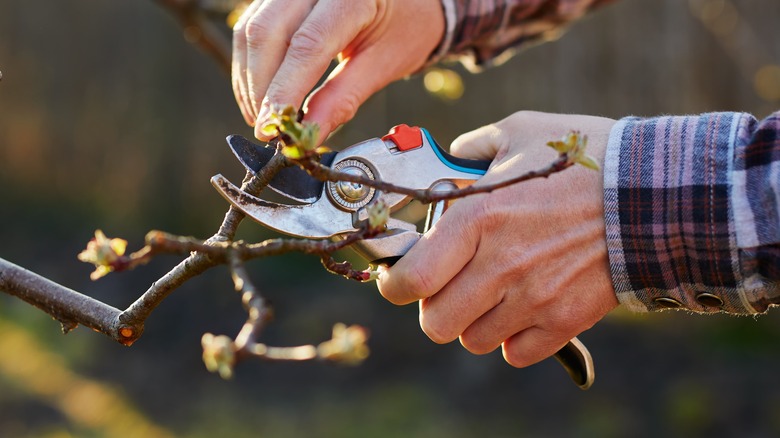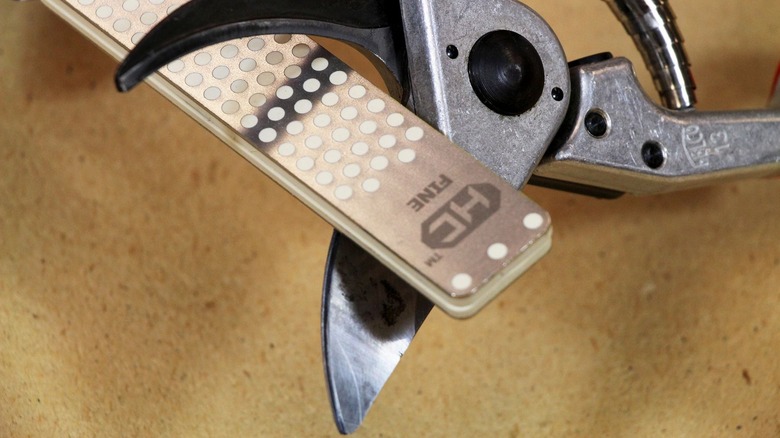The Simple Tool To Easily Sharpen Your Garden Hand Shears
We may receive a commission on purchases made from links.
Ask anyone what you should use for sharpening garden shears and many will suggest a whetstone. That's no surprise, given that they've been around for thousands of years — possibly even as long as there have been gardeners! However, while they can work well, most are a bit awkward to hold. They are at their best when used on a bench, with the blade that needs to be sharpened taken to them. This is awkward with garden hand shears because of their construction and the relatively small blade size. What you really want to do is take the sharpening stone to the tool.
Diamond stones (or diamond files) are the ideal, easy-to-use solution. They are well-known for their efficiency when sharpening knives – one of the top reasons to consider buying a sharpening stone. And, there are small, portable versions perfect for garden hand shears, pruners, scissors, pocket knives, etc. They are made by bonding industrial diamonds to a steel or resin surface. The diamonds work very rapidly even on hardened steel blades. Good quality diamond stones, such as DMT's DuoSharp Double-Sided Diamond Sharpening Stones, are also extremely durable and can last up to 20 years with proper care, which makes them a great value for the money.
Sharpen garden hand shears with diamond stones
Using a diamond stone is simple. First, you need to clean any sap and resin off the blades. Wear strong gloves to protect your hands and give yourself a good grip. A little dish soap, warm water, and a kitchen scourer or steel wool will do the job, but never use vinegar for cleaning blades. If there's any stubborn rust on the surfaces, give them a quick spray with WD-40, wait 10 to 15 minutes, and try again. If it still won't budge, rub lightly with some steel wool or a wire brush.
Hand shears have one wide and one narrow blade. Only the wide blade does the cutting, so only this has to be sharpened. Diamond stones can be used dry, though it's recommended to still use a bit of water to rinse away any loose particles. Choose the coarse side and, starting where the blades meet, rub along the curve, out to the tip. Work slowly. You don't need a lot of pressure. It's more important to maintain the blade's existing angle. After perhaps a dozen or so easy strokes, you should develop a bright, even edge. Turn the diamond stone to the fine side and repeat the process.
This rubbing action creates a burr (a small fold of metal) on the flat side of the blade. To finish the job, this has to be removed. Using the fine side of the diamond stone, work from the inside out again. Three or four strokes should be enough. Now all that's left to do is find a plant and try your newly sharpened shears out!

